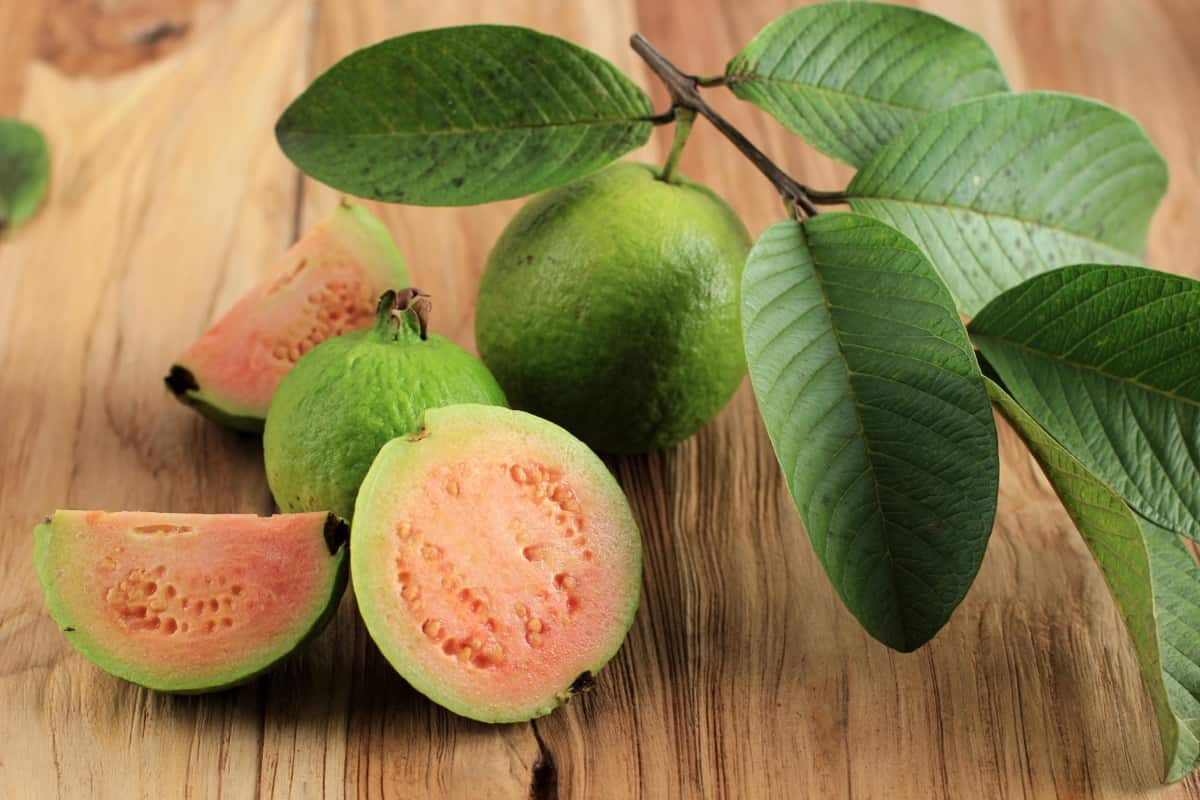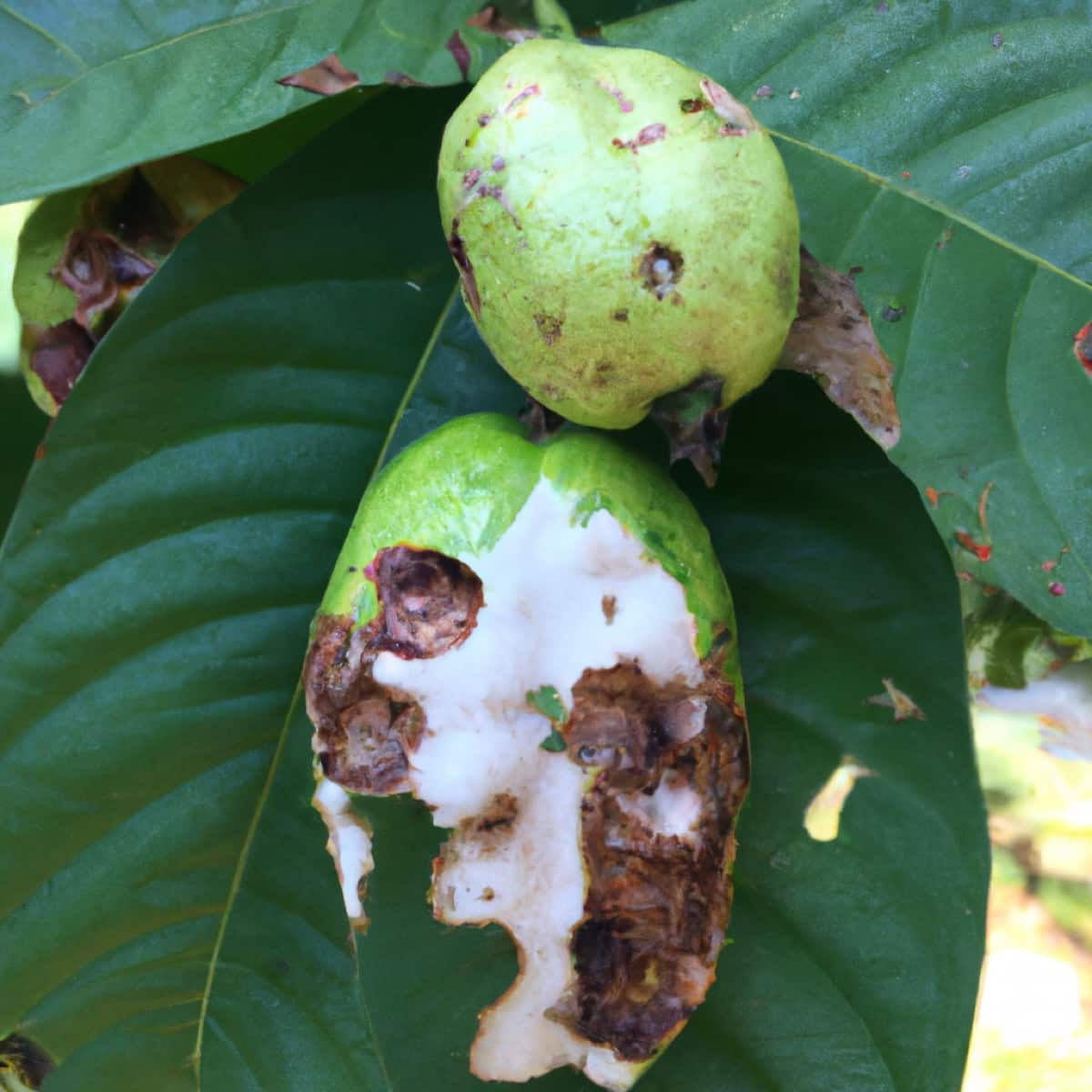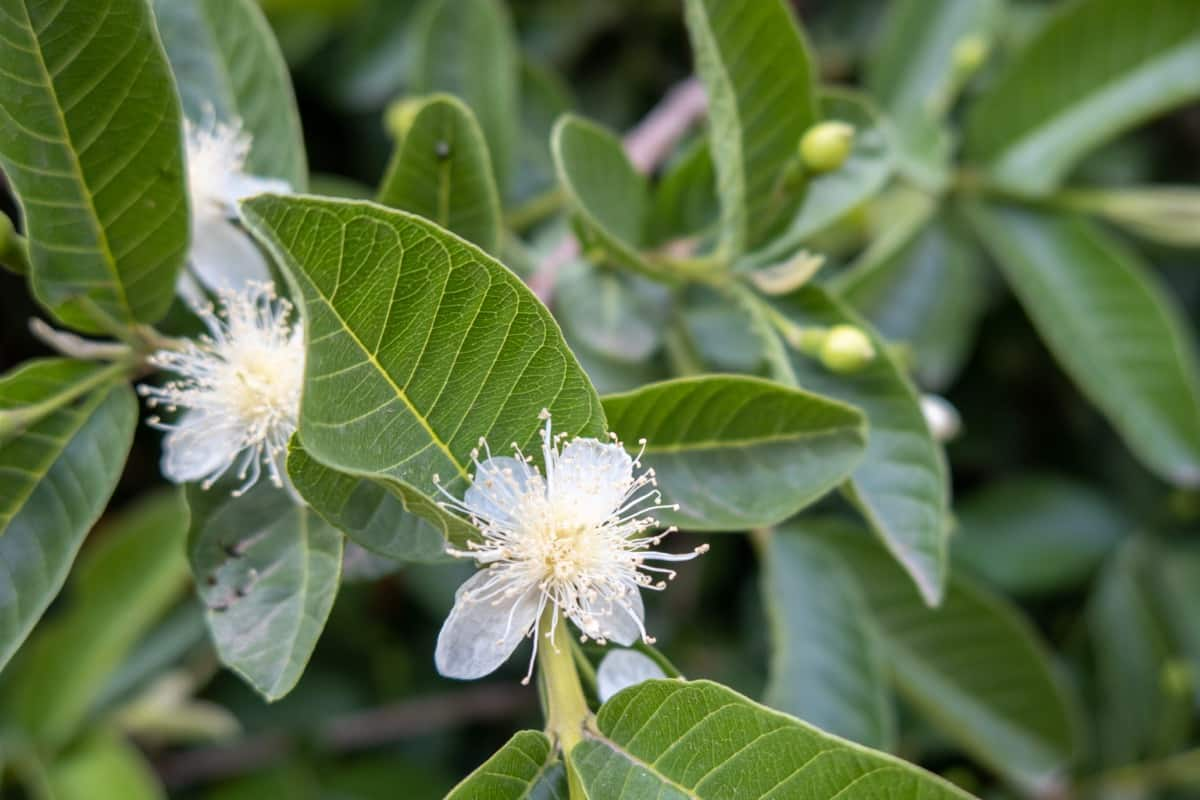Fusarium wilt is a devastating plant disease caused by the fungal pathogen Fusarium oxysporum. It affects many crops, including bananas, tomatoes, cucumbers, and watermelons, among others, resulting in significant economic losses. The disease is challenging to manage once established in a field; therefore, preventive measures are crucial. Effective control of this disease relies on integrating multiple management strategies, including cultural practices, chemical control, and biological control.

Fusarium Wilt Disease Management in Guava
The Causal Organism of Fusarium Wilt Disease
The causal organism of Fusarium wilt disease is a fungus called Fusarium oxysporum. This fungus can infect many plants, including guava, and has numerous pathogenic forms specific to different host plants. In the case of guava wilt, the pathogenic form is called Fusarium oxysporum f. sp. psidii.
This pathogen enters the plant through the roots and colonizes the xylem vessels, causing them to become blocked and preventing the normal movement of water and nutrients throughout the plant. This leads to wilting, yellowing, and eventually death of the plant. Fusarium oxysporum is a soil-borne fungus that can survive in the soil for several years without a host plant.
The Disease cycle of Fusarium Wilt Disease
- Survival: The pathogen Fusarium oxysporum can survive for several years in the soil and on crop residues such as chlamydospores or mycelium. The pathogen can survive on seeds, greenhouse structures, tools, and machinery.
- Primary infection: The primary infection can occur through seed-borne transmission or infection of roots at the root tip or in small wounds, such as where lateral roots branch off from the tap root. The fungus enters the plant through the roots and spreads to the xylem vessels.
- Colonization and spread: The fungus colonizes the xylem vessels and produces mycelium and conidia, which can be carried to other parts of the plant through the water-conducting system. The fungus also produces toxins, which contribute to the disease’s symptoms.
- Symptom development: As the fungus spreads through the xylem vessels, it causes the vascular system to become blocked, leading to wilting and yellowing of the leaves, stunted growth, and premature defoliation. The infected plant may also show dieback of branches and underdeveloped fruits.
Causes/Conditions Favorable for Fusarium Wilt Disease Spread in the Field.
- Stagnation of water in the guava field: Prolonged water stagnation in the guava field provides a suitable breeding ground for the Fusarium oxysporum pathogen, which can infect the guava roots and cause the disease.
- Temperature and humidity: Fusarium wilt disease in guava thrives in warm and humid conditions. The temperature ranges of 23-32°C with 76% relative humidity provide optimal conditions for the growth and spread of the pathogen.
In case you missed it: Fruit Rot Disease Management in Guava: Symptoms, Treatment, Cultural, and Chemical Control

Symptoms of Fusarium Wilt Disease
- Yellowing and wilting of leaves: The first symptom of Fusarium wilt disease in guava is the appearance of yellowing and wilting of leaves, often starting from the lower parts of the plant and progressing upwards. The leaves may also become droopy and lose their turgidity.
- Stunting and unthriftyness: As the disease progresses, the plant may become stunted and show general unthriftiness, with reduced growth and vigor.
- Premature shedding of leaves: Infected leaves may start to shed prematurely before they have fully senesced. This can lead to a thinning canopy and reduced photosynthesis.
- Underdeveloped fruits: Fruits on affected branches may need to be developed, hard, stony, and fully mature. This can result in reduced yields and poor fruit quality.
- Defoliation and death: If the disease is uncontrolled, the entire plant may become defoliated and eventually die.
Fusarium Wilt Disease Management in Guava by Cultural method.
- Root damage prevention: During transplantation, the roots of plants should not be severely damaged. This will help to maintain the tree’s vigor and enable them to withstand infection.
- Good tree vigor: Timely and adequate manuring, inter-culture, and irrigation can help maintain proper tree vigor and help the tree withstand infection.
- Green manuring: The disease symptoms do not appear under green manuring, and the disease development is less when organic nitrogen sources are used.
- Formalin treatment: Pits may be treated with formalin and kept covered for about three days, and then transplanting should be done after two weeks.
- Soil solarization: Solar with a 30fm transparent polyethylene sheet during May-June can effectively control wilt pathogens.
Fusarium Wilt Disease Management in Guava by Chemical method.
- Benlate and Bavistin: These chemicals are systemic fungicides that effectively control Fusarium wilt in guava. Drenching with 0.2% of either Benlate or Bavistin 4 times a year and spraying twice with Metasystox and Zinc sulfate has been reported to control wilt.
- Thiophanate methyl is another systemic fungicide effective against wilt pathogens, reported that thiophanate methyl could control the wilt pathogen in guava.
- Carbendazim, Captafol, and Thiabendazole: These chemicals were effective against the wilt pathogen under laboratory experiments.
- Tebuconazole, Propiconazole, Prochoraz, Triforine, and Carbendazim + flusilazole: These chemicals were effective in vitro evaluation in South Africa.
- Actidion: This antibiotic effectively controls guava’s wilt.
Fusarium Wilt Disease Management in Guava by Biological method.
- Various biocontrol agents have shown effectiveness, including Trichoderma sp., Streptomyces chibaensis, Aspergillus niger, Penicillium citrinum, and bio-dynamic antagonists controlling the wilt pathogen of guava. These bioagents can be easily grown on maize or bajra seeds and multiplied on cheap substrates like Sacchrum sp. (grass) and dried and green leaves of Psidium guajava.
- Studies have shown that Aspergillus niger is the fastest-growing and most effective bioagent in controlling wilt disease in the field. Besides controlling the disease, it also enhances plant growth and development, resulting in taller plants with thicker stems and more leaves. Similarly, Trichoderma viride has been reported as the best bioagent for controlling wilt disease.
Preventive Measures for Control of Fusarium Wilt Disease
- Remove or destroy crop residues: Crop residues are a potential source of inoculum and should be removed and destroyed after harvest. This will reduce the risk of the pathogen surviving in the soil and infecting subsequent crops.
- Choose resistant cultivars: Some cultivars have been reported to resist Fusarium wilt. Choose cultivars that have been bred for resistance to the pathogen.
- Use clean propagation materials: Seed can be treated effectively with hot water to kill the pathogen. It is important to use clean propagation materials to minimize the risk of introducing the pathogen into the soil.
- Use clean substrate in greenhouse crops: Use clean substrate and avoid reusing contaminated substrate to minimize the risk of introducing the pathogen into the soil.
- Disinfect tools, machinery, and irrigation water in greenhouses: Disinfecting tools, machinery, and irrigation water can reduce the risk of introducing the pathogen into the greenhouse.
In case you missed it: Algal Leaf Spot Disease Management in Guava: Symptoms, Treatment, Cultural, Chemical Control

Conclusion
Fusarium wilt disease poses a significant threat to agricultural production worldwide, and the development of effective management strategies is crucial. Integrating various control measures, including resistant cultivars, clean propagation materials, and effective soil drainage, among others, can help prevent the establishment and spread of this disease.
Furthermore, using biological control agents such as beneficial microbes can reduce the reliance on chemical pesticides and promote sustainable agriculture. Continued research on the biology of the pathogen and the development of novel control measures will be essential in managing Fusarium wilt disease and ensuring global food security.
- Beneficial Insects in Pest Management
- Natural Solutions for Pest Control in Flower Gardens
- Types of Fungicides Used in Agriculture
- Common Issues in the Fruit Development Stage of Pomegranate Farming
- Fruit Development Issues in Papaya: Easy Solutions and Treatment
- Soil-Borne Diseases and How to Protect Your Plants
- Practices to Prevent Disease Spread in the Garden
- From Wilted to Thriving: How to Treat Root Rot Naturally in Houseplants
- Natural Remedies to Cure Brown Spots on Fig Tree Leaves